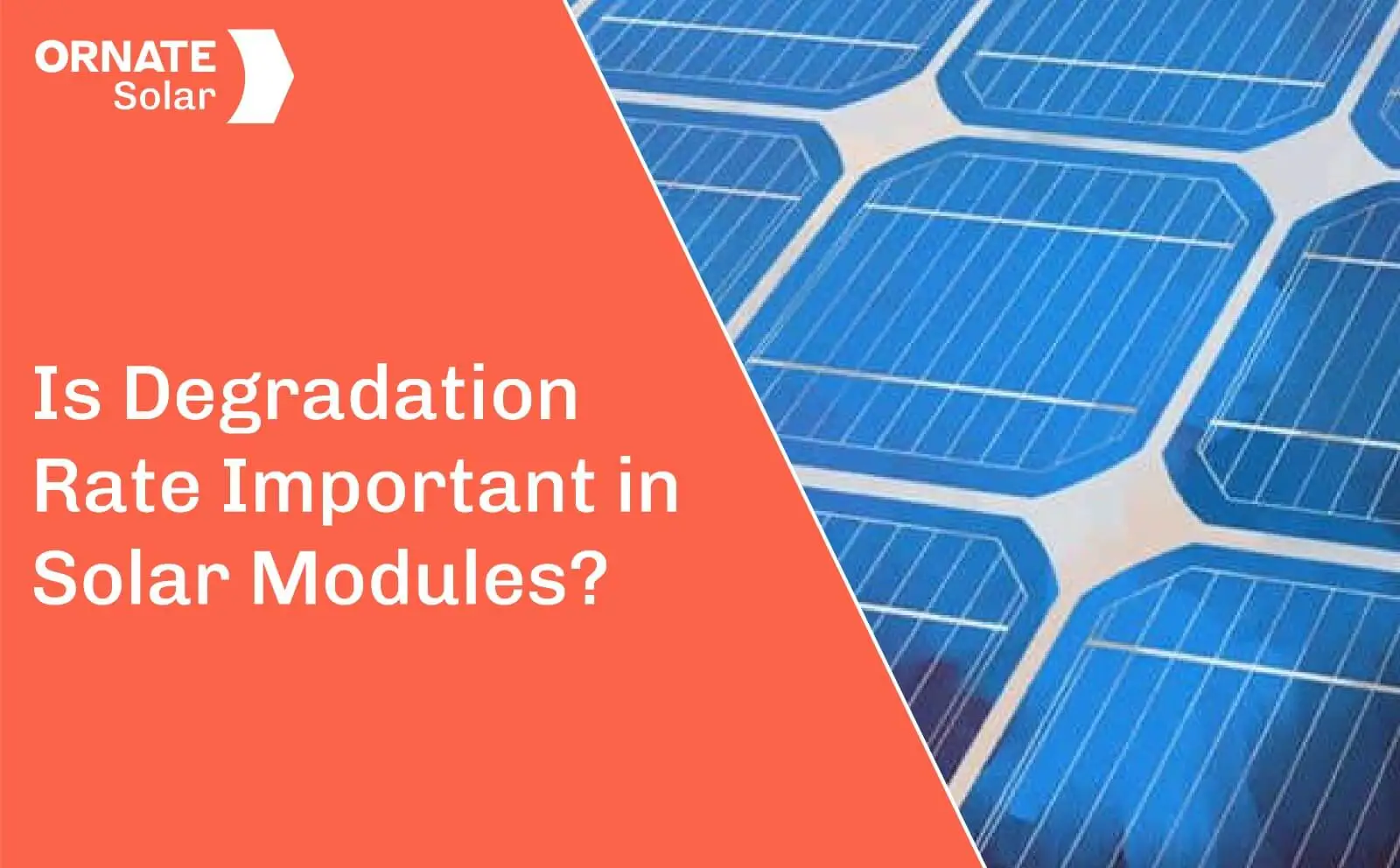

Over the course of 25 years, your solar plant’s panel efficiency will gradually decrease. This is called degradation, and it is an inevitable part of every solar panel’s life.
But, there is no need to get alarmed.
Even though your PV efficiency will go down as the years pass, just like any other electrical equipment, the degradation rate in high-quality solar panels is always minimal.
In this blog, we explore what module degradation is, what factors influence it, and what steps you can take to guarantee steady power and energy production for the next 25 years.
What is Degradation Rate in Solar Modules?
The degradation rate is the rate at which the efficiency of solar panels falls over time.
In the market, you will find different solar module brands offering different performance warranties, each explaining the degradation rate you can expect from the product.
But generally, in the first year, the average degradation rate is between 2-3% and less than 0.7% in the subsequent years for the top brands. This results in no more than 20-25% fall in efficiency after 25 years.
Here it’s important to note when we say that the panel degrades by 2%, its maximum efficiency doesn’t drop by that amount. So, in a module with 20% efficiency, 2% would not mean that your efficiency will go down to 18%. But, rather there will be a 2% reduction of 20, i.e. 0.4%.
So, after 25 years, there won’t be a major reduction in your overall power output as the years pass.
Here’s the performance warranty of Canadian Solar modules for example:

CS promises that after 25 years, the power output of a plant with Canadian solar modules will not be less than 83%. Even if there is a 1-2% discrepancy in the final figures, you will still generate at least 80% of the rated power after close to 3 decades of usage.
But, there are scenarios where solar panels can degrade at a faster rate, which we will explore in the next section.
Reasons for Degradation of Solar Panels
- Light-Induced Degradation
You might have wondered why the degradation rate is higher in the first year. That’s because panels degrade the highest during their first few hours of sunlight exposure. This is called light-induced degradation (LiD).
LID occurs due to a phenomenon where the oxygen in the silicon wafers reacts with the boron in the modules. It is more common in p-type monocrystalline modules.
To counter this problem, many module manufacturers have started incorporating technologies that check LID and keep it to the minimum level.
- Quality of Panels
Not all panels have the same rate of degradation. Evidence suggests that low-quality solar panels degrade at a faster and much higher rate than modules from trusted manufacturers.
If cheap materials and components are used in a solar panel, it can affect their durability. For example, some manufacturers reduce the amount of aluminium in the panel frame to cut costs. But, this makes the module more vulnerable to damage.
Another example is the use of low-quality encapsulant material, which leads to a phenomenon called Potential Induced Degradation. In PID, the electrons start deviating from their original path, leading to lower generation and a high risk of electric shock.
- Weather and Temperature Changes
Solar panels are exposed to a multitude of weather conditions. But, extreme weather conditions such as heatwaves, heavy rainfall, hurricanes, etc. can damage the panel components and reduce their efficiency.
The components of a module and structure expand and contract as the temperature changes. As a result, the joints between materials get strained and start deteriorating slowly.
High humidity can also be detrimental in installations where protective measures have not been incorporated.
- Assembly and Installation
Installing mismatched PV components during installation can become another reason for degradation. Linking mismatched modules and inverters, even if they are of superior quality individually, can impact the overall performance of the photovoltaic system.
Moreover, improper handling, faulty connections and installation of modules can bring down efficiency.
- Maintenance
Panels require regular cleaning to remove the accumulated dirt and debris. This is because, stray leaves, bird droppings, dust, etc. can act as shadows and bring down the efficiency of the modules.
These spots can also start overheating and can develop into serious issues like the hotspot effect.
How Can You Reduce Module Degradation?
We’ve confirmed that all solar panels undergo a certain degree of degradation. However, there are measures you can implement to prevent a significant decline in panel efficiency.
1. Select High-quality Modules from trusted Manufacturers
When it comes to solar panel performance, it will largely depend on the type and brand of modules you choose. It is always advisable to go for brands that have an established reputation in the industry and offer products with high efficiency.
2. Opt for the right features
While exploring panels, look for products with features such as positive power tolerance, shading tolerance, LID mitigation, etc.
Solar panels with positive power tolerance, for example, produce a bit more power than what they’re rated for. As a result, even if they degrade slightly over time, their performance won’t drop by much.
3. Choose a Trained Installer
Your choice of installer can make a big difference in your PV performance. Always opt for trained and certified professionals, who know how to handle the equipment correctly, mount the panels securely, etc.
They will also be able to detect any problems in electrical connections or roofs and help you troubleshoot them beforehand.
4. Keep your panels Clean
Solar panel maintenance is not difficult. All you need to do is clean the panels with water once in two weeks. You can increase the frequency to weekly if the solar plant is located in regions with high levels of dust or pollution.
Also, avoid cleaning panels during peak sunlight periods or when the module temperature is high, as it can lead to the formation of micro-cracks.
To remove the accumulated water from the panel edges, which can result in overheating, opt for a simple maintenance tool like Aqua Pi. This tiny clamp gets attached to the panel edges and drains residual water, prevents dirt accumulation, and boosts power output.
5. Monitor your Performance and Schedule Checks
Inverter technology has advanced in recent years. Now almost every solar inverter is equipped with a remote monitoring feature which allows you to keep a check on your system performance. You can also troubleshoot minor issues and detect major problems beforehand.
However, we also recommend scheduling preventative checks once every 6 months to map the health of the PV system.
Top Panels with Degradation Mitigation Technology
When it comes to high-quality panels that are not as susceptible to degradation, we recommend two brands: Canadian Solar and RenewSys.
Canadian Solar’s HiKu7 mono perc and BiHiKu7 bifacial solar panels come with comprehensive LiD and LETID mitigation technology that results in 50% lower degradation. They also provide better shading tolerance and minimize micro-crack impact.
RenewSys Mono PERC and Poly modules, on the other hand, are equipped with excellent PID resistance and positive power tolerance.
About Ornate Solar
Ornate Solar is a leading solar company with 10 years of experience in the industry and the mission to reimagine the way solar is installed worldwide.
By not only partnering with the best-in-class solar brands but also developing our high-quality solutions, (panels, solar inverter, accessories, InRoof), we develop and deliver solutions that are modern, reliable, and effective.
If you are looking for high-quality solar panels, reach out to us at 1800 2026 252 to discuss your options.





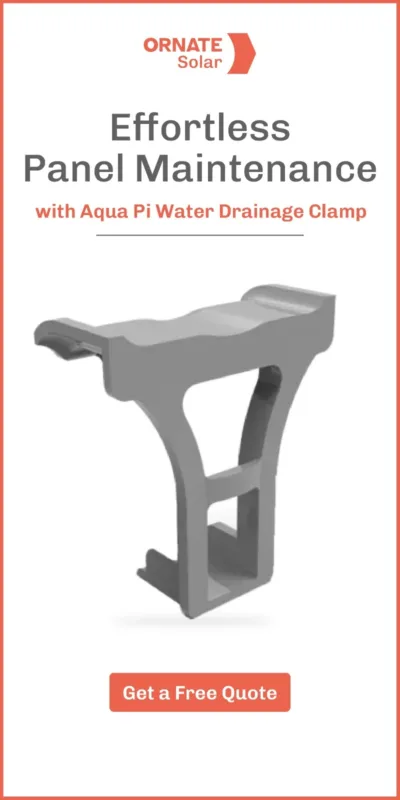




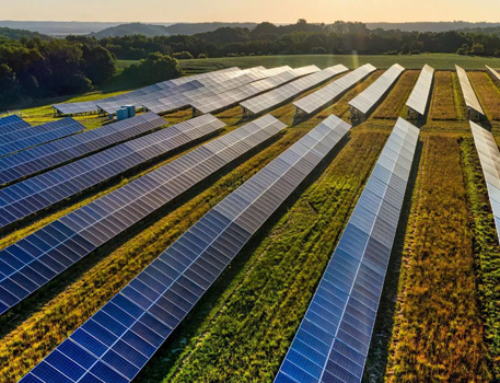
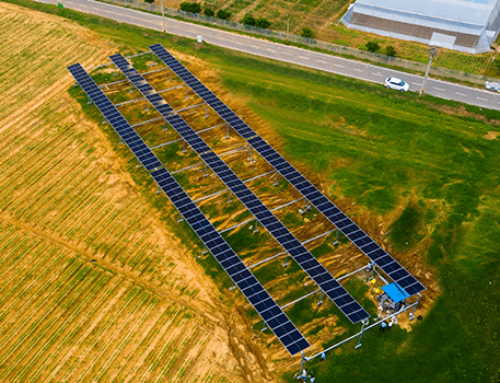
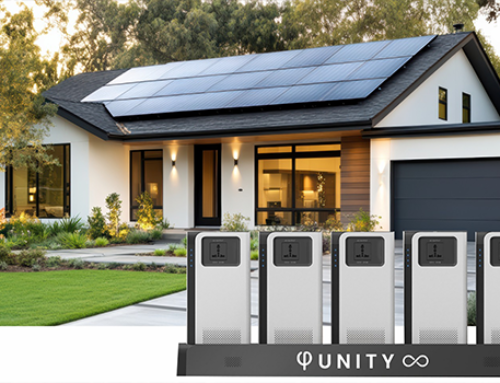
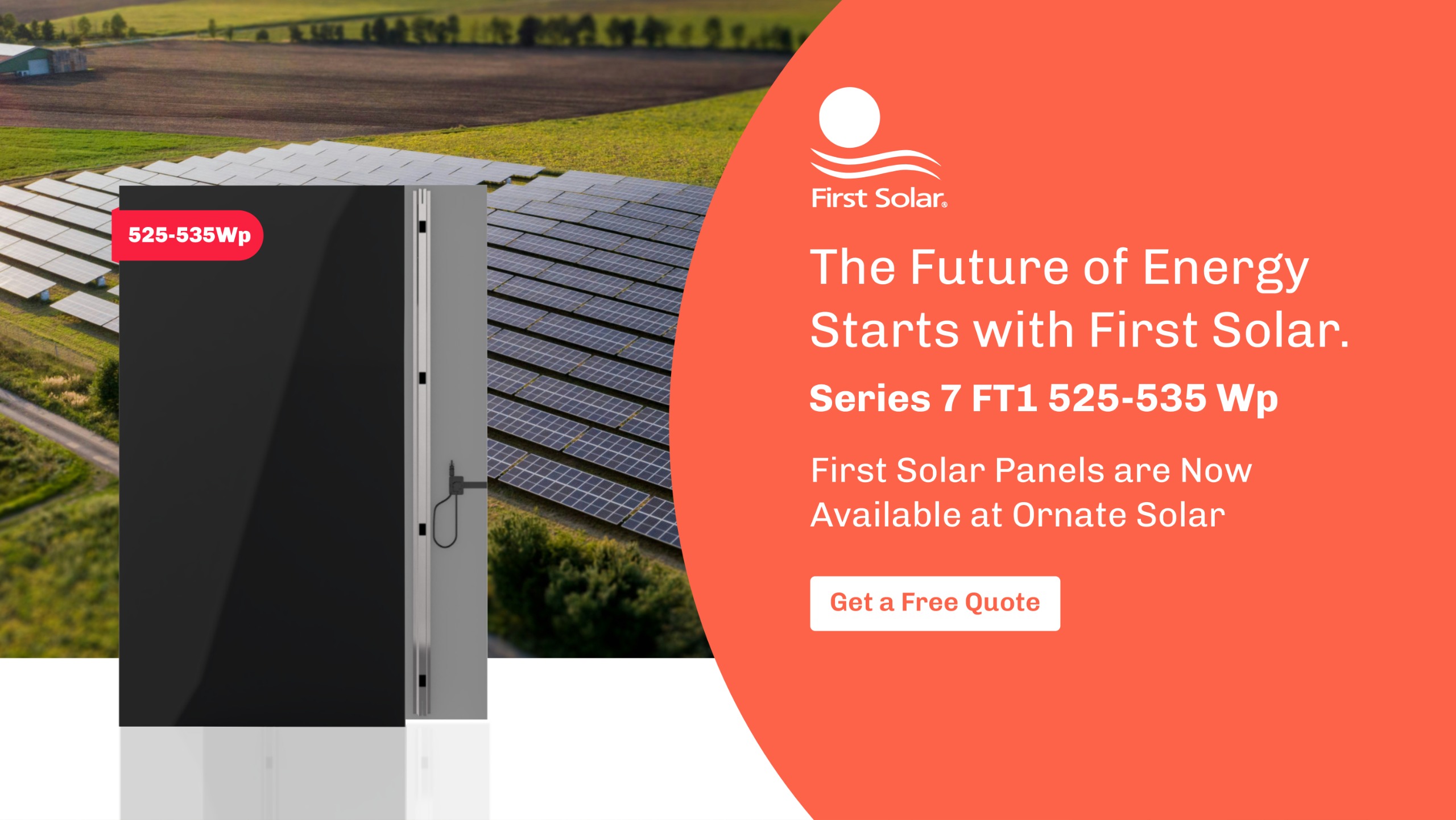
Leave A Comment